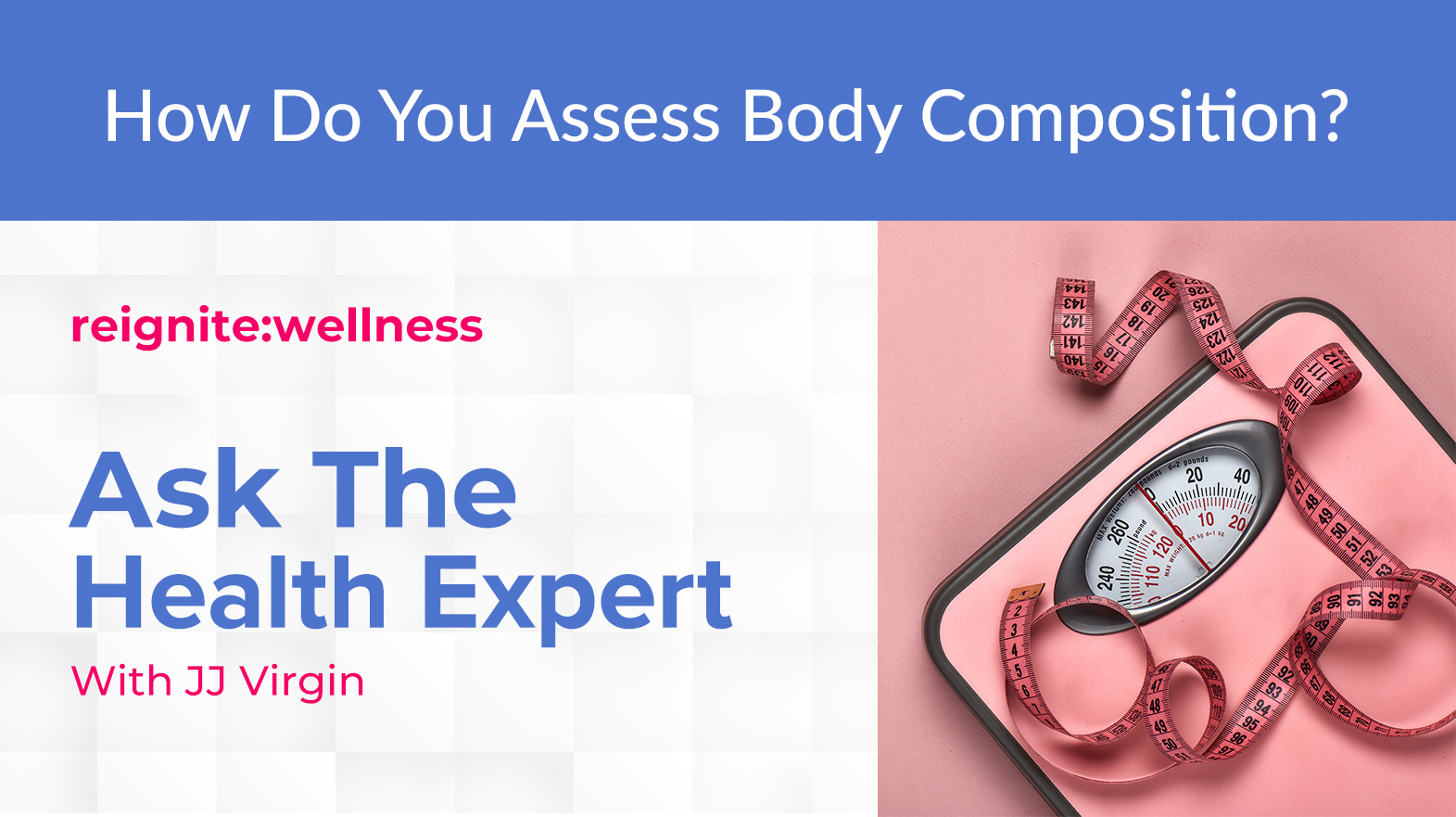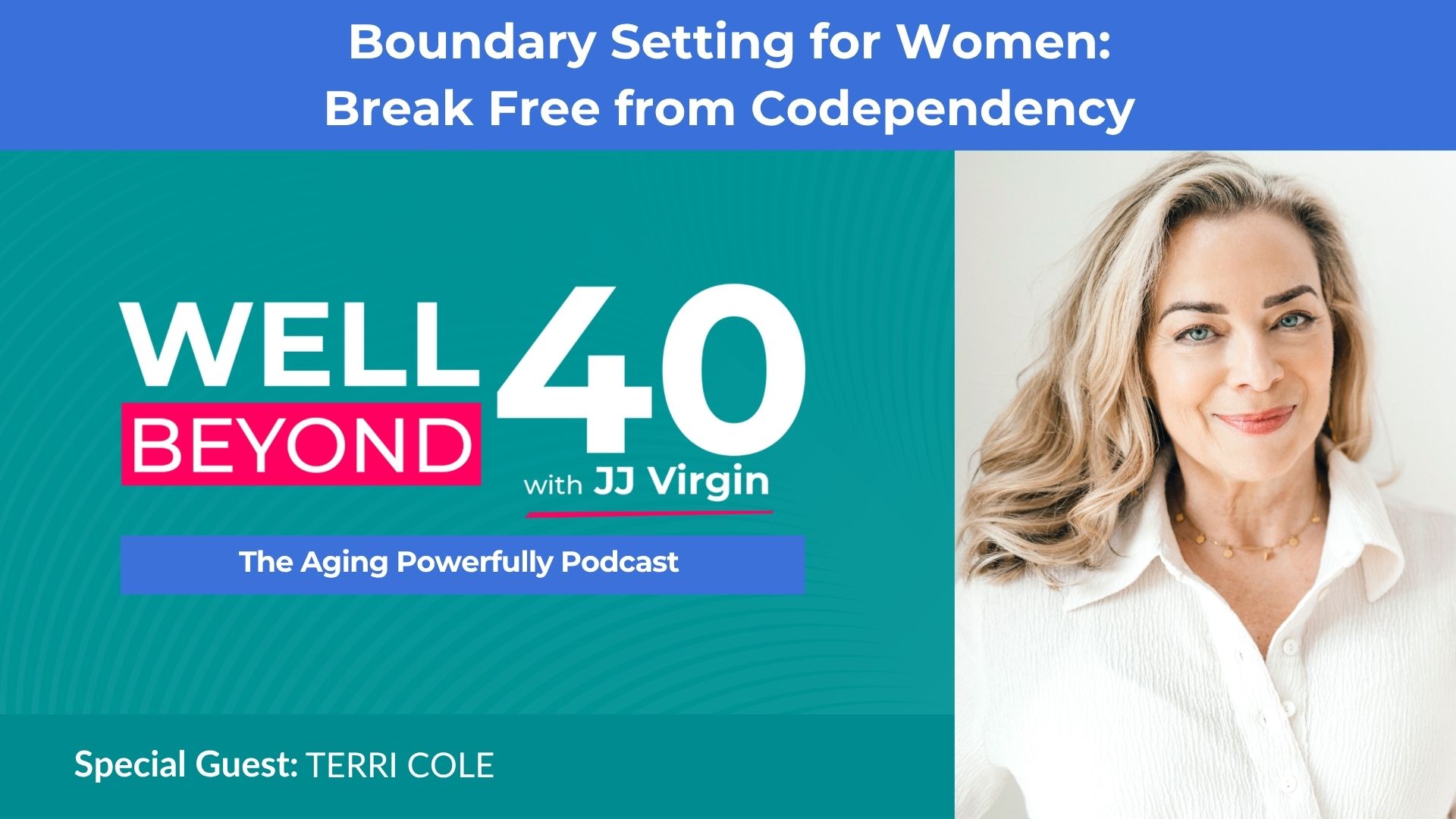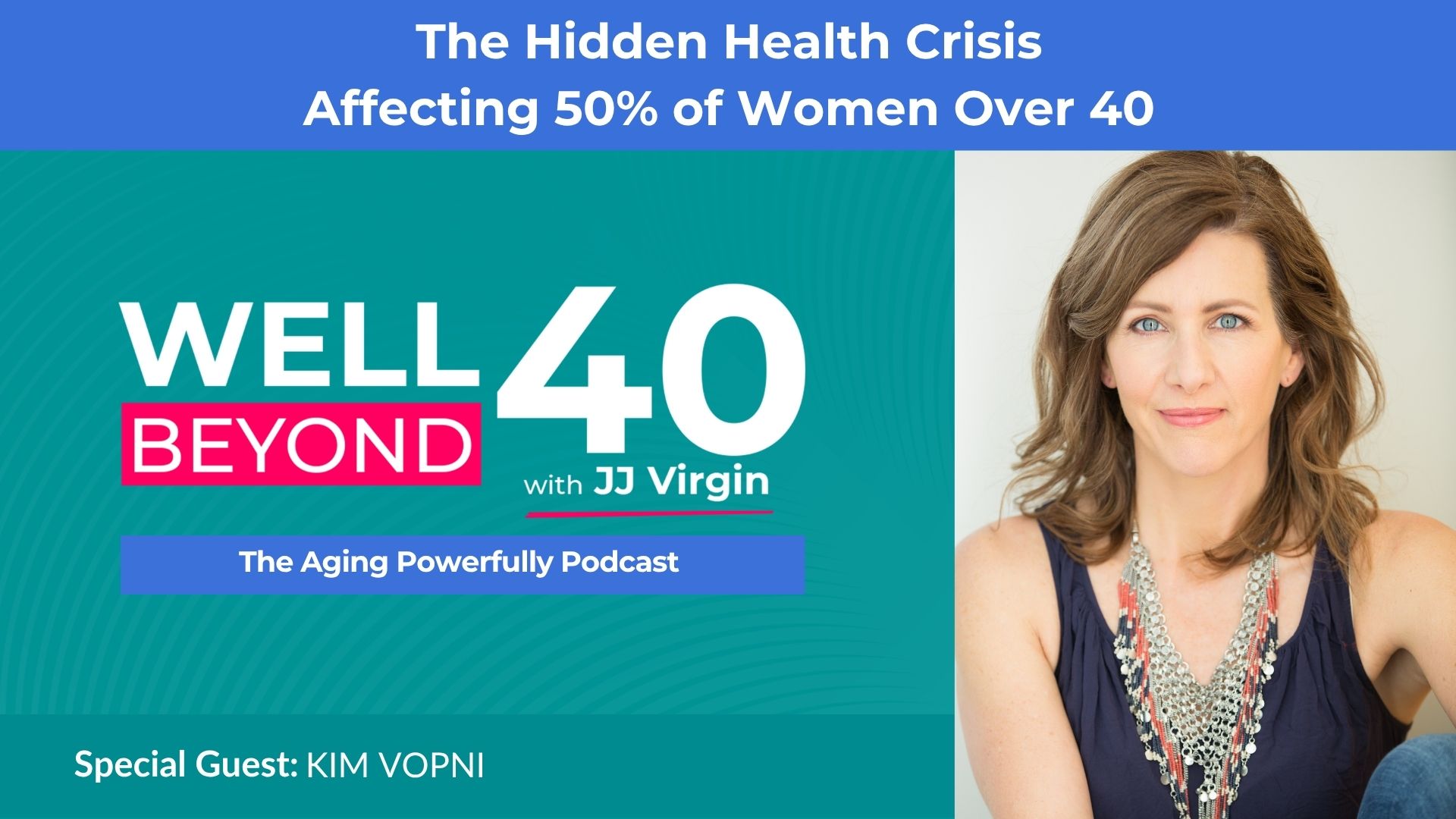Why BMI Isn’t an Accurate Tool & What To Use Instead
When it comes to evaluating body composition, measuring tape and skin fold calipers don’t provide a full picture. Your BMI doesn’t, either, because what we really want to know is what makes up the weight you see on the scale, where your body fat is, and whether that body fat percentage is healthy or unhealthy. In this episode, JJ explains how to more accurately assess your body composition, including the tools to use, the markers to look for, and ideal numbers for men and women.
Mentioned in this episode:
Tanita’s Body Composition Scale
Tanita’s Segmental Body Composition Scale
Click here for more information and offers from our sponsors
ATHE_Transcript_Ep 480_How Do You Assess Body Composition?
JJ Virgin: [00:00:00] How do you assess body comp is BMI or BFR? The same as body comp.
This is JJ Virgin four time, New York times bestselling author, celebrity nutrition, expert, and fitness hall of Famer. I’ve been on a lifelong quest for answers to the toughest health. And now I’m sharing what I found with you. Welcome to ask the health expert,
Laura, from Facebook asks, how do you assess body composition is BMI or BFR? The same as body comp. All right. If you’re wondering what the heck are those things, that’s body mass index and body fat rate. And I will be right back to explain what all these things mean and how you should unpack it all.[00:01:00]
All right. So I will tell you back way back when like 30 plus years ago, I used to go into people’s houses and take their scales. and I used to solely use a tape measure and body fat calipers. But then I realized what I wasn’t getting all the information that I needed and what I really think we need to do is we need to understand way more than weight, because it’s really about what your weight is made up of.
And also with body fat where that body fat is, there is a huge difference between subcutaneous fat. You know, that pinch an inch that you may not like, but it’s not gonna hurt you like the deep visceral fat. So when I’m looking at body composition, BMI is not gonna be the great one for you now for the average person, it’s gonna give us a baseline.
However, it’s looking at [00:02:00] your. Height squared versus your weight. So weight and height squared, I believe that’s the equation to figure out a number to put you into the range of underweight overweight, or ideal weight. And, and by the way, there’s, you know, as much research showing that being underweight is, is as bad or worse than being overweight, especially as we age.
So it’s really about getting you into that. problem is it doesn’t take into account. How much of your body is fat versus fat free mass? It’s making assumptions for the average person in the worst case scenario. If you use that and used a tape measure, it could help you. BFR body fat rate is getting us closer to where we wanna be.
And that is because we wanna understand a couple different things. And so what I’m gonna give you are the things that you wanna measure, because what you measure and monitor you can improve. But before we even talk about that, I wanna give you a [00:03:00] caveat, be kind to yourself. Have compassion for yourself. I want you to think of a body composition scale and a tape measure, just like you would a blood pressure cuff or a, or a blood glucose monitor.
These are not things that are there to shame you. They’re there to give you information. That you can take action on and also to see if what you’re doing is moving you closer to where you wanna be or farther away. Right? This is not something to shame you. And I know there’s a whole lot of stuff around weight, and I will tell you that I have been for.
A gal, a heavyweight most of my life, because I was always super duper athletic and I was really tall and early on, I thought, you know, I’m six feet tall. I should be a model. Nevermind. I’m not very photogenic, but I thought that would be a great idea. And I was told I had to lose 30 pounds. Well, 30 pounds, I would be absolutely sick.
I tried to lose 10 and was being asked if I was anorexic. So we really. Stop looking at weight, we need to unpack and go [00:04:00] what’s that weight made up of, and for my body fat. Where is it? And is it healthy or is it unhealthy where we have it sitting? so this is how we can use a scale and a tape measure. And the great news for all of us is it used to be really expensive to do body composition testing.
In fact, when I was in doctoral school, we had spent a whole semester with body composition testing, doing calipers, doing underwater weighing. and back then the gold standard was to go do a DEXA scan. And that’s still really the gold standard. I mean, the only way you really know exactly how much fat you have is to dive into a cadaver dissection, which defeats the point.
Right. But a DEXA scan. Which I highly recommend that you get. If you haven’t had one, yet people do this for bone mineral density. The side effect is you’ll also find out your muscle and your fat mass, but we really wanna know our bone mineral density when we’re younger, when we can affect a change, same with fat free mass or lean body [00:05:00] mass has the time to be putting on this muscle.
And the time to me, making sure that you’re really taking care of your bones is in your thirties and forties. It’s not all of a sudden going oh, I’m 60 in frail. Now. It doesn’t mean that in your fifties, sixties, seventies, eighties, you can’t do something about it, but we really, the better the base, the better off you’ll be.
so how I do this is this I go get and there’s a couple brands. I like the Tanita, and I think we might even have at jjvirgin.com the link to this one on Amazon, I like the Tanita body fat scale that gives you both body fat and also visceral body fat. That’s how much is deep around your gut? That’s super important, but I’m gonna give you another way to look at that or In-Body’s another great brand Amran.
So ideally, if you can get a scale. That is gonna tell you, not just your, your weight. It’s gonna tell you your weight in terms of how much of your weight’s fat free mass and how much of your weight’s fat mass, cuz basically those are the two components and it does it by looking at something called total [00:06:00] body water.
which means if you’re dehydrated, you’re gonna look like you have more body fat than you do, and your weight will be lower. If you’re hyperhydrated you’re gonna look like you are heavier, but you have more muscle. So you need to take the average over time, not look at one day and go, holy smokes. What happened?
Right? Because we might be holding onto water. We might be dehydrated. So I take the average. I’m watching my weight over a week. Not over a day. We will have fluctuations. Maybe we’re constipated. Maybe we Ate something we’re intolerant to and we held onto it, which is another great way to use a scale, to be able to see if a food’s working for you or not.
Right. So it’s gonna look at those two components bonus points. If we go farther and really look at where that fat’s located, that’s a segmental bioempedance scale and especially visceral adiposity. And the reason we wanna look at how much fat is around your waist. is because, or your abdomen is cuz that deep fat I’m not talking.
The, the stuff, the pinch, the, the deep fat in there is that real [00:07:00] metabolically unhealthy more inflammatory fat. okay. So that’s the first thing. So now let’s break it down a little further because we wanna do that. And we also wanna do a tape measure, a waist and hip measurement every week. And what you wanna have is you wanna make sure that if for a man your waist hip ratio is 1.0 or below and a woman 0.8 or.
and then the other side of that is what should your waist be now? There’s measurements that they’ll give you out there for, you know, risk factors, women it’s like 34 inches or above or, or above 34 inches is an issue for men. I think it’s above 38 inches or 40 inches, but I don’t never thought that made sense unless you factor in your height.
because obviously a woman who is six feet tall is gonna be different than a woman. Who’s five feet tall. So I’m still looking for that perfect metric. That’s like it, it should be for a woman. It should be less than your half your height. so we wanna [00:08:00] monitor that because if you’re losing weight, but you’re not losing your waist, you’re making yourself worse, not better.
That means. And that’s why we don’t wanna focus on losing weight. I wanna focus on holding onto and building fat free mass. And I focus on that first. Cause I know that if you do that, You become more insulin sensitive and muscle requires a lot more energy to stay on your body. You’ve heard that both with the workouts, the repair afterwards is very metabolically dense.
It’s costly, but also just having more muscle gives you a higher resting metabolic rate too. And muscle’s the first place we can start to restore insulin sensitivity. It also. Gives us a margin for error muscle gives us better blood sugar control. It can suck some of the carbohydrate into the muscle where it’s stored muscle stores, water, and glycogen together for energy.
So there’s a lot of good things about muscle, besides it also protects your bones and doing that weight training pulls on your bones and makes your bones stronger. So we’re [00:09:00] gonna look at your waist to hip. And we’re gonna look at your weight, broken into fat free mass and fat mass. And then we’re gonna look at your visceral adiposity now.
What should all of those things be? Holy smokes. I have been looking at so much research as I work on my next book to really give you where should your body fat be? And what’s crazy is the norms I was given back in graduate and doctoral school 30 plus years ago are entirely different. Like they’ve shifted up and we have not changed.
So why is it now? Okay. For us to have more body fat. First thing I’d say is really where that body fat is, is all important. So the norms I really wanna find are how much visceral adiposity should you have because that’s the one you really wanna focus on, not having much of, and that’s why a waste and a waist to hip are so important, but in general, men have way less essential, fat than women.
I think women have somewhere in the [00:10:00] 10 to 13% essential fat, fat we must have on us to survive. It’s how we have babies, et cetera. In men it’s 2 to 5%. So you already see the difference, right. And you know, metabolically, cause they’ll say, oh, men and women are the same. I’m like, no, they’re not. Men are not hairy women, men have more muscle mass to begin with, which means they’re gonna have a better metabolism.
They’re gonna have a stronger metabolism to begin with. So what we need to think of for women is. I was always told, Hey, 18 to 22% is, you know, kind of ideal range for women. Athletes might be 15 to 20%. Women could go up to stay 25%. But over that, you start to get into some, some situations where you could be insulin resistant over like 30%.
Definitely. What I would say to you is I’m most concerned about is go and test and look at your body composition. and start to monitor, as you are losing that you are making sure you’re holding onto or building muscle. What you might find is that you’re something called [00:11:00] TOFI or it’s called sarcopenic obesity, thin outside fat inside, which means that you don’t have enough muscle mass on your body that maybe your weight’s ideal, but your body fat is high, which means your whole focus needs to go on building muscle, not losing weight.
Holy smokes, building, building, building muscle. So, if you find that you’ve got what would be called an optimal BMI, but your body fat percentage is high. Your focus should be on building muscle and adding fat free mass. And if you’re afraid about gaining weight, I can tell you that as you add that fat free mass.
Muscles metabolic spanks it holds in everything tighter and starts to boost your metabolism and you will burn fat and you will be solid like a rock. So that’s the focus. Now, if you have an excessive BMI and you go, gosh, I just, I need to lose both. I’ve, I’ve got too much fat, but you know, I just have too much of everything.
You can focus first on losing some fat, if you’re totally deconditioned. And you go and start to exercise. What’s cool is you’ll do something [00:12:00] called recomping. You’ll actually be able to hold onto and build muscle as you lose fat. But once you get into to reasonable shape and after a couple of months, that window passes.
So if you’re already working out, you have to make the decision. Am I focusing on holding onto and building muscle am I focusing on burning fat and generally. as you’re starting to do this, generally, the, the focus should be on muscle, which is why we’ve gotta use the scale because otherwise you’ll have no idea, no idea.
If you know that weight gain of five pounds. I mean, you, realistically, we should be able to look in the mirror and tell, go, wow, my jeans are smaller or are looser on me. However, I lost five pounds. Well, that’s definitely you lost fat and put on muscle. So that’s what I want you to look at. And again, those are the key critical things, and I’m hoping as more of this information comes out, we’ll be able to kind of have the metrics be that you look at your weight, your fat free mass, your fat mass, you would look at your visceral adiposity and [00:13:00] you do a waste and hip measurement.
Those are the things we wanna be monitoring. And we wanna be monitoring this on a regular basis. And in fact, one of the interesting things I used to tell people don’t weigh more than once a week. Well, this research is actually very clear that people who weigh in daily actually are way better at maintaining their weight.
And again, I don’t want you to maintain your weight because if you are not very. Careful as you age, you’re maintaining your weight. You’re still losing muscle putting on fat. So you’re shifting the composition. So that’s why we’ve got to make sure we know what that weight is made up of. All right. Whew. So go get yourself a body composition scale.
And remember, it’s just giving you information that you can take action on no shame. Right?
This is JJ with ask the health expert. I answer your questions weekly. Plus I interview the top experts in and wellness. So make sure you [00:14:00] never miss a show by going to subscribetojj.com. Yep. It’s that easy? I’ll see you next time.

 Subscribe to our show
Subscribe to our show 





